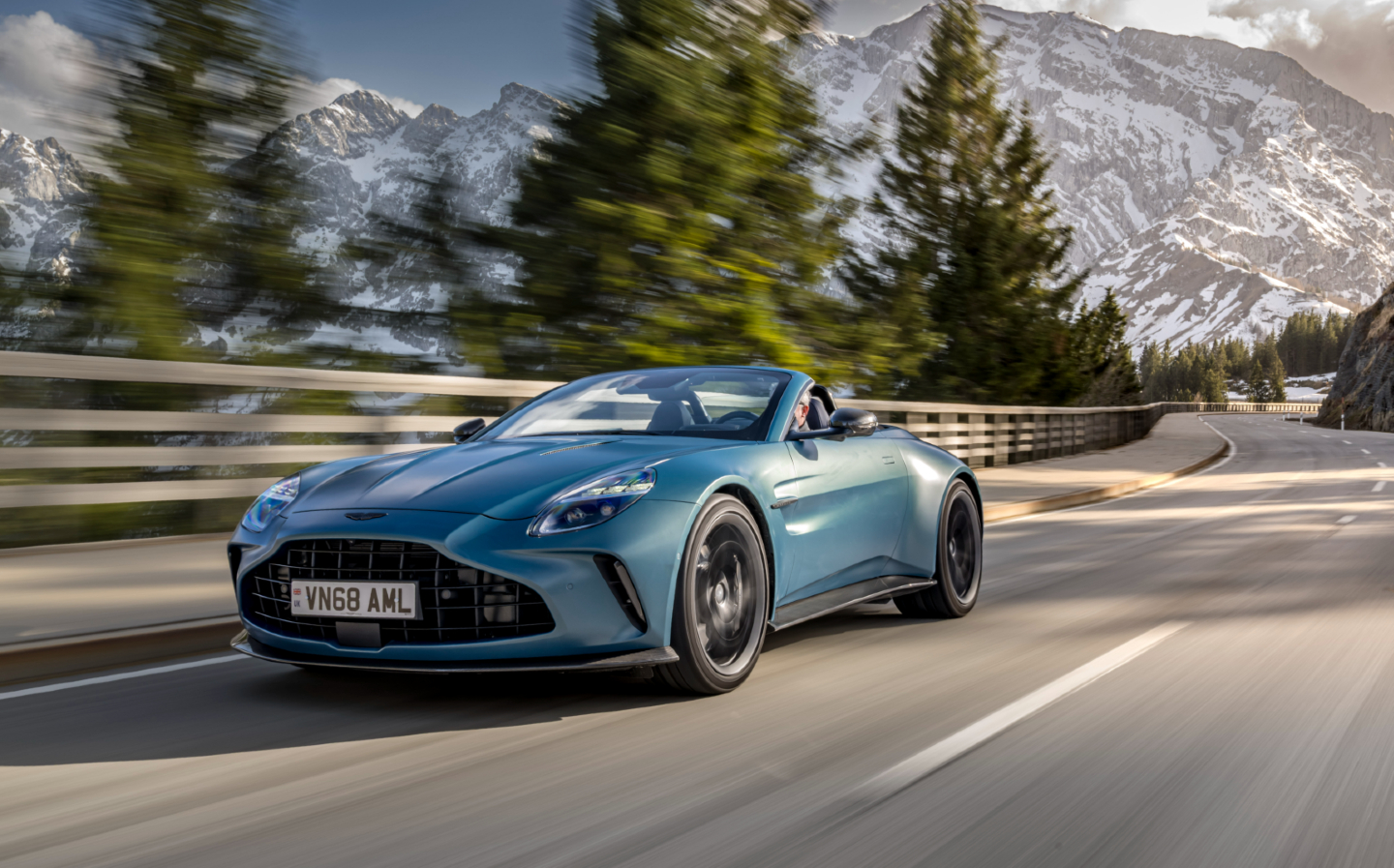Aston Martin Vantage Roadster 2025 review: Still hardcore but with added pose factor
British air force
There was a time when cutting the roof off a sports car — or any car, actually — resulted in a chassis that twisted more than the audience of a Chubby Checker gig. As you may be aware, a twisting chassis is highly undesirable, as it means the handling becomes inconsistent and, well, bad. Not so much any more; with modern materials and production techniques, a convertible car’s frame can be almost as rigid as a hardtop — usually at the cost of added weight, in the form of additional struts and braces.
This is a very good thing when it comes to the Aston Martin Vantage you see here, as in fixed roof form it’s already a handful; a car for the brave and skilled. The last thing you need is for the front end to be bending one way while the rear is doing something else entirely.
In my review of the Vantage coupé last summer, I noted that three journalists in the British media group had decided to remodel the car’s gorgeous exterior with trips into a racing circuit’s Armco barrier.
It’s a car, I wrote, that is “champing at the bit when you’re sticking to the speed limits. It’s a car that encourages you to push through the limits of legality and before you know it, you’ll be standing by the side of the road explaining to the boys in blue that it really wasn’t your fault, it was the car.” It also, I said, “has a wild side, and the potential to bite you hard if you don’t show it the proper respect.”

Which is why I was trepidatious as I got behind the wheel of the new Vantage Roadster, but the engineers reassured us during the briefing that because the convertible and coupé versions were developed simultaneously, the goal was to ensure that they felt exactly the same to drive.
Part of that was creating a chassis that didn’t need any extra strengthening when the roof was removed. The underpinnings are so solid, I was assured, that even after the tin-opener treatment, there’s no increase in flex through the body.
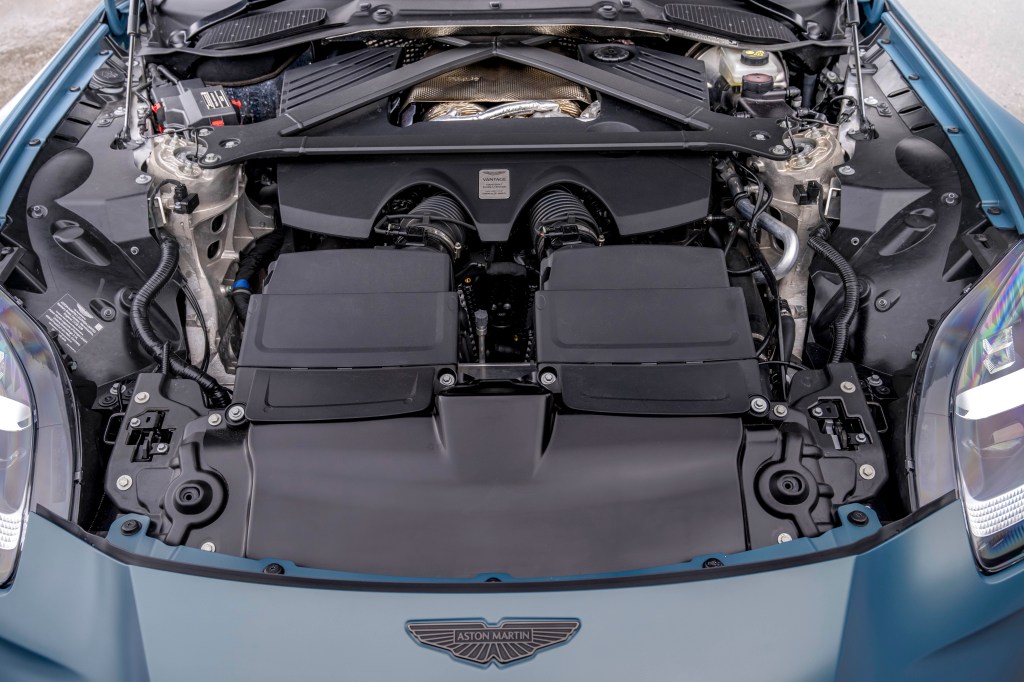
Another thing that hasn’t changed is the engine under the bonnet: a rorty twin-turbocharged 4-litre V8 sourced from Mercedes-AMG, but tuned specifically for the new Vantage by Aston’s engineers. It has 30 per cent more power and 15 per cent more torque (twisting force, or the amount of kick delivered to the rear wheels) than the powerplant in the previous Vantage, with peaks of 656bhp and 590 lb ft respectively. To give you an idea of what that means, it’s more power (and a lot more torque) than a McLaren F1’s 6.1-litre V12 produced — which shows how the game has moved on since the 1990s.
Despite not needing extra strengthening, the Vantage Roadster does carry around a little extra bulk than the fixed roof Vantage — 60kg more, to be exact. When I quizzed him, the senior engineer was quite vague about why there’s a weight difference. Obviously removing the tin top actually removes some mass, and the roof mechanism adds some back — but that doesn’t account for all of the additional weight. Instead, it’s down to multiple small — and somewhat mysterious — tweaks throughout, which include the rollover hoops behind the seats.
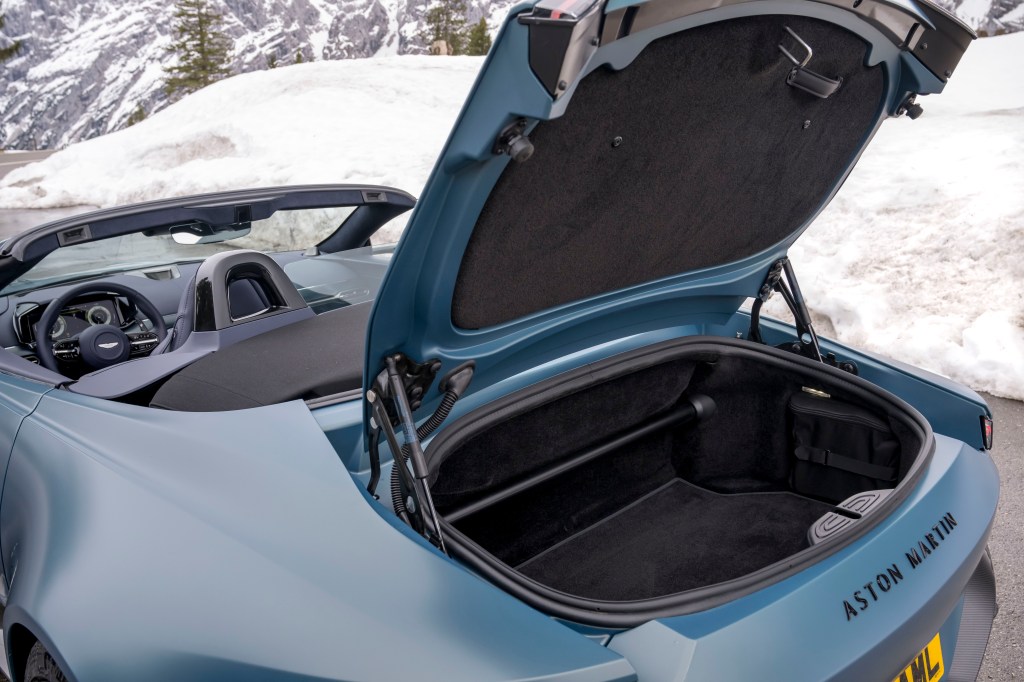
Another noticeable difference is that the boot is smaller — a compromise cabriolet buyers are more than willing to accept. Aston has wisely separated the Z-folding roof stowage area from the boot itself, which means you don’t have to worry about your Louis Vuitton luggage or Hugo Boss leather jacket getting caught in the mechanism when the sun comes out.
All this tinkering does affect the balance of a car, so Aston spent a long time working on bringing the Roadster back towards the feel of the coupé. For example, a change you won’t see, unless you’re brave enough to tinker with the engineering of a car that costs upwards of £175,000, is a change to the transmission mounts, which in the Roadster are very slightly softer and have different geometry from the coupé. This helps “maintain the relationship” between chassis and powerplant, apparently. More importantly tells the world that Aston Martin sweats the details and adopts a forensic approach to driving dynamics.
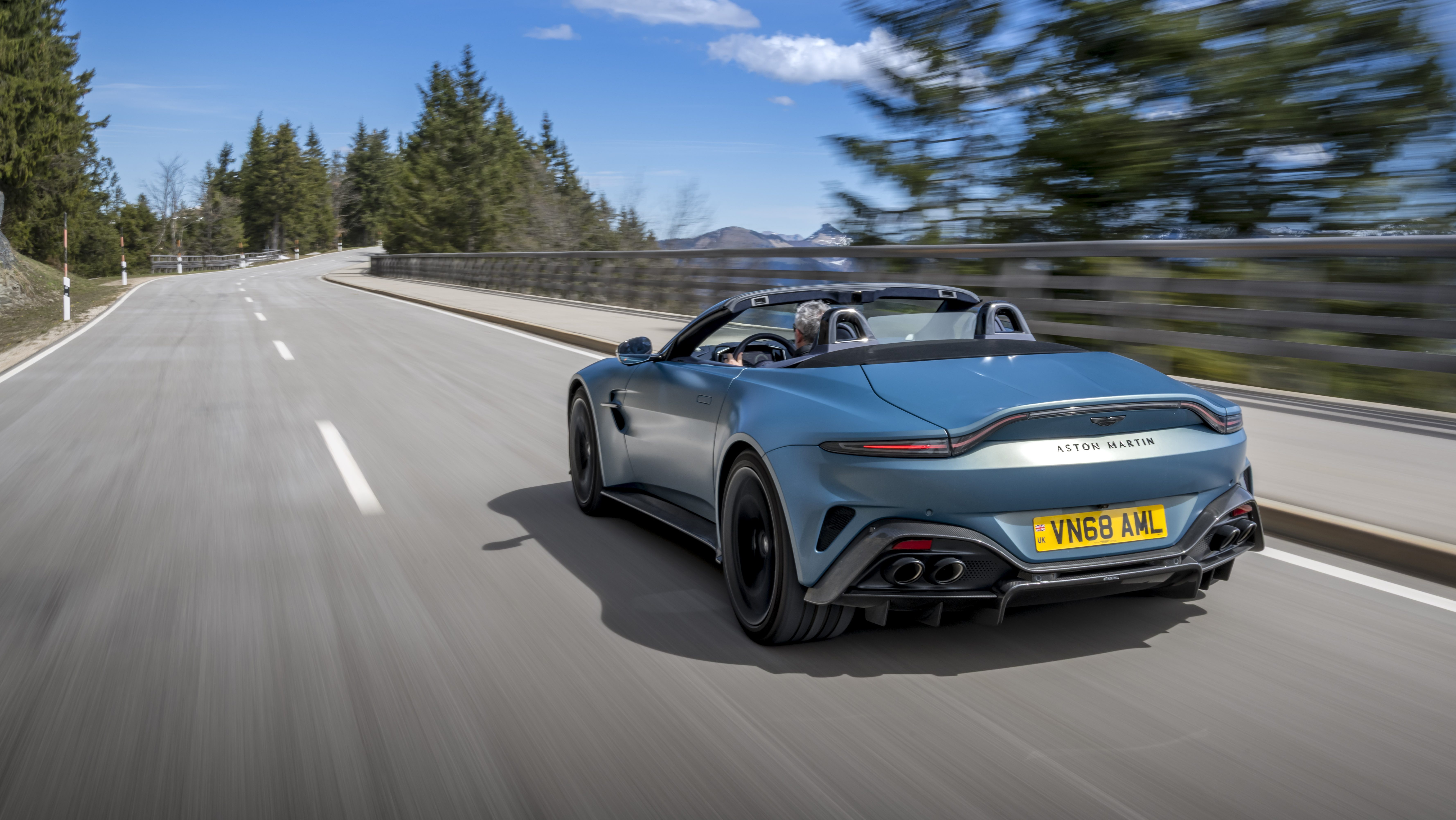
Okay, the droptop Vantage is a little slower to accelerate than its fixed-roofed sibling, but you show me someone who says they can notice a car that goes from standstill to 62mph in 3.6 seconds rather than 3.4 seconds, and I’ll show you a liar.
The top speed is still a ludicrous 202mph… even with the roof down, I was told. And interestingly, while Ferrari spent ages designing little winglets for the convertible version of the 12Cilindri, that prevent aero backwash behind the seats from creating drag and re-entering the cabin, Aston Martin didn’t have to do this with the Vantage. That means the Roadster’s design remains delightfully clean and elegant.
The interior was apparently designed largely with a ruler but certainly meets the luxury brief, with hand-stitched Bridge of Weir leather in abundance and quality touchpoints and switchgear. Aston Martin today is leagues ahead of the company it was just five years ago, in terms of its cabins.
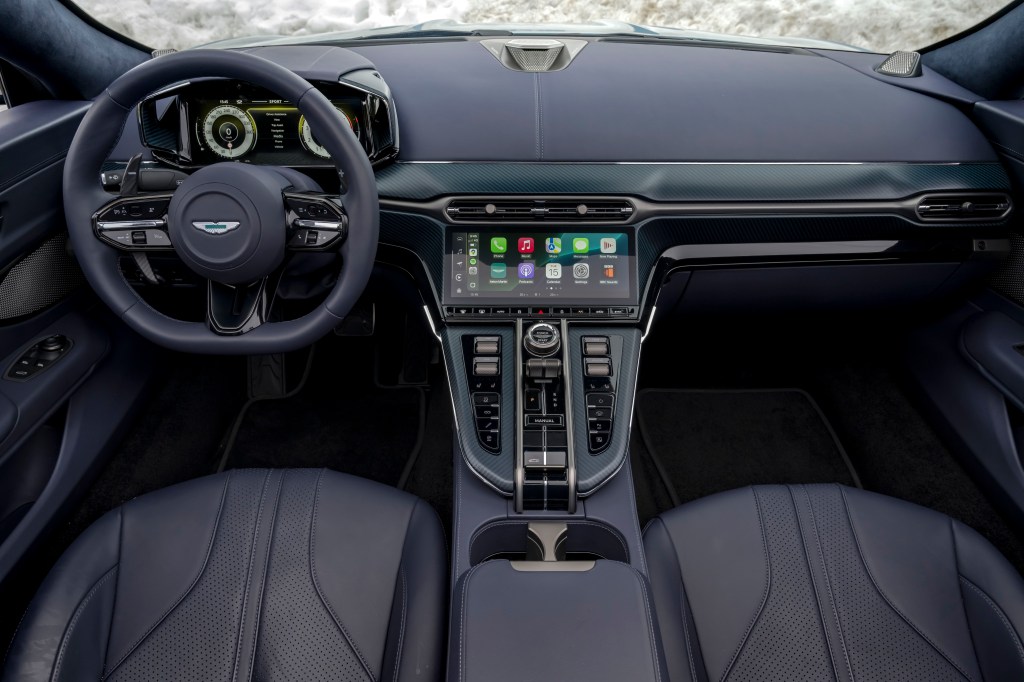
That’s perhaps most apparent in its technology, which no longer relies on Mercedes hand-me-downs. The digital driver’s display was good in the coupé but a software update since that car’s launch last year has been rolled out with larger fonts and clearer info, based on feedback from customers, while the central touchscreen is attractive, responsive and runs both Android Auto and Apple Carplay.
The seats are wonderfully supportive and comfortable, even for very tall drivers, and amazingly even the barnet on top of my 6ft 5in frame didn’t get an aerodynamic restyling while driving with the roof down. It just feels like a lovely place to sit, and when you get out after a long journey you won’t have to visit your chiropractor.
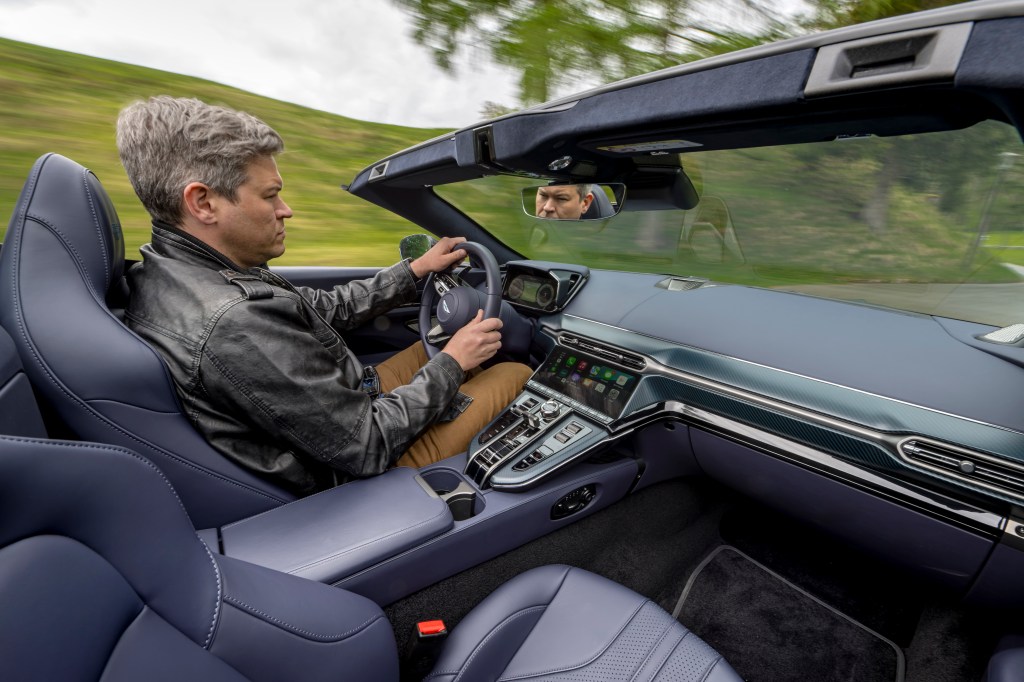
But like Black Widow in a cocktail dress, the beauty belies the true make-up of this car. The Vantage is — more than any other Aston — meant to deliver a hardcore sports car driving experience; precision handling and super sharp response to pedal inputs.
It’s got Bilstein dampers tuned towards performance more than comfort, which means you can feel every grain of grit in the asphalt below you. It’s a car that glides along beautifully on a smooth road, and you feel connected to the driving experience in a way that most modern cars can’t get near, but rougher surfaces aren’t as pleasant. Want a plush long-distance cruiser? Buy a DB12.

What the Roadster improves on, though, is the ambience on such roads. The fixed roof Vantage can pick up some reverb in the cabin from bumpy roads, as well as some tyre roar, but with the roof down that goes away entirely. The weather during our extensive test drive over a mix of roads in Austria included sunshine and showers, which meant periods with the roof up and down, and it was remarkable for its advantages in both states of play.
As with the coupé, the chunky steering wheel feels purposeful, and inputs result in sharp changes of direction, even around the centre position, and that possesses the Vantage with an eager front end. It hunts down apexes like a Jack Russell goes after rats.
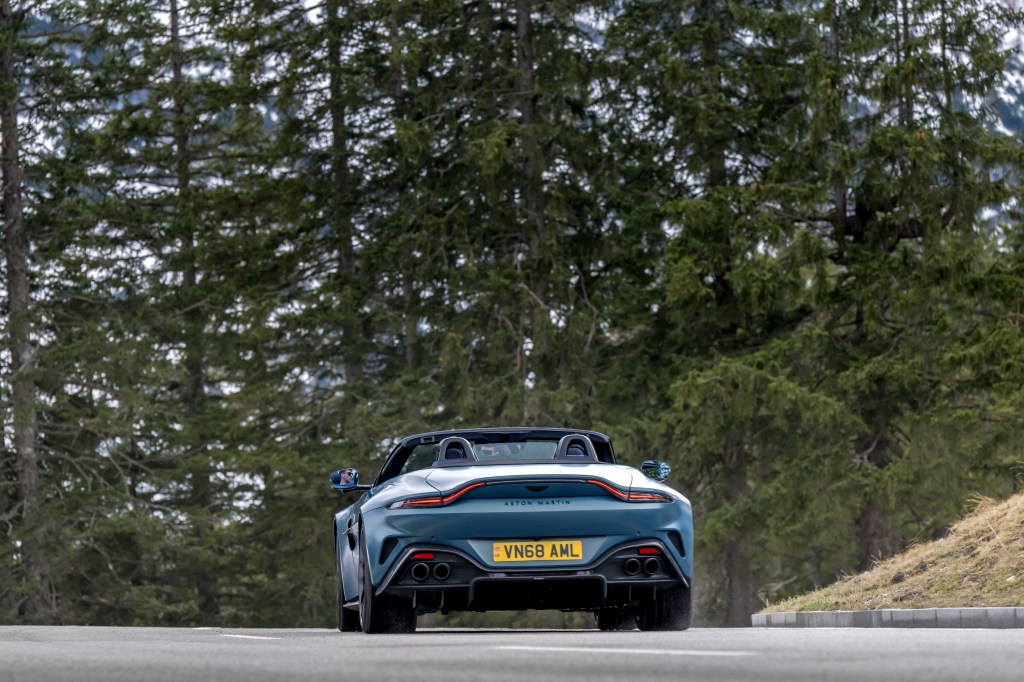
That said, the back end can be easily provoked; even with the car in the default “Sport” drive mode and the electronic stability programme turned on, a hairpin, a slippery surface and a heavy right foot can result in the rear tyres breaking traction momentarily. Switch to Sport+ or Track, then turn ESP off and dial up the traction control level (on a scale from 1 to 9, with the latter being completely off), and increasingly larger cojones are needed. This is a car — whatever roof you go for — that demands complete concentration from the driver, even with all the safety aids turned on. It’s a car that Fernando Alonso could get the maximum out of, while most mortals won’t touch the sides of its capabilities.
So, the Aston Martin Vantage Roadster still has all the edginess of the coupé but comes with the advantage of better acoustics. And exposing yourself to the air means an even more satisfying aural experience from the quad exhausts. Modern emissions regs mean these sorts of cars are inevitably more muted than less potent roadsters of the past, but the sounds are still a delight and the Vantage’s V8 delivers a deep rumble, with crisp pops and crackles on downshifts.

There’s another reason you’d choose the convertible Vantage: added pose factor. Press the button to drop the top and 6.8 seconds later all the world can see the person who can afford such a machine, and let’s face it, that’s going to be the main appeal for some.
Related articles
- If you enjoyed Will Dron’s review of the Aston Martin Vantage Roadster, check out what he had to say about the coupé
- Also take a look at his review of the Ferrari 12Cilindri Spider
- And don’t miss our Porsche 911 GT3 review
Latest articles
- F1 2025 calendar and race reports: The Formula One season as it happens
- Extended test: 2024 Renault Scenic E-Tech review
- Smart #5 2025 review: Not a high five, but the best Smart for years
- BMW iX xDrive45 review 2025: Divisive looks remain but updated electric SUV is otherwise superb
- Aston Martin Vantage Roadster 2025 review: Still hardcore but with added pose factor
- Updated Skoda Enyaq vRS matches 0-62mph time of Czech firm’s fastest-ever car
- Long Way Home review — Ewan McGregor and Charley Boorman hit the road again
- ‘I was a tear-soaked mess’ — Richard Hammond opens up on his last Top Gear show during new race with James May
- Charley Boorman: Potholes? You should see the ones Ewan and I faced in Kazakhstan


